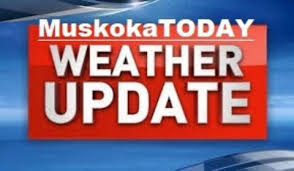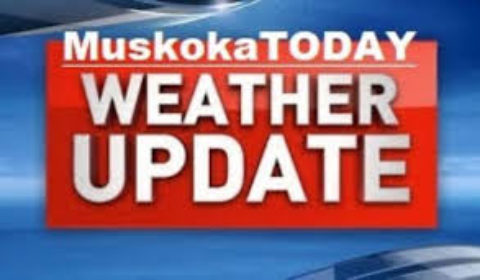Baby it’s been cold out there – whatever that means
MUSKOKA — What’s normal anymore?

Certainly not the weather — especially in the three-week runup to Christmas.
Want proof? Besides all this snow? (And remember Nov. 10 — more on that below.)
The first three weeks of December temperatures will be “normal” for us.
Whatever that means.
That’s according to Gerald Cheng at Environment and Climate Change Canada.
The Central Canada acting warning preparedness meteorologist, says northwestern Ontario will experience above “normal” temperatures.
However, he says no clear trend is present for temperatures and precipitation for the rest of the year.
Looking back, however, he says November seemed particularly cold due to the intensity of the cold and because it had been a long time since the 11th month had been this cold.
For last month, temperatures have been colder than normal across the province (anomalies of -2 to -3°C), with larger departures from normals in portions of Southern and Northern Ontario (up to -4°C).
November started on a mild note, but the cold air invaded the province during the second week and prevailed until the end of the month, with a few milder days sprinkled here and there. As a frigid air mass, more typical of mid winter paid a chilling visit to the province, numerous new record low temperatures for November 22 and 23 were set. In Kingston and Brockville, previous minimum temperature records dating back to the 1800s were dislodged.
In terms of precipitation, Cheng says in November conditions ranged from normal to drier than normal in northern Ontario, especially in the Northwest where some anomalies reached -75%.
Southern Ontario, on the other hand was wetter than normal, with anomalies of +50 to +75% in areas bordering Lake Ontario.
Noteworthy events are described in the Severe Weather portion and includes the heavy rainfall event that affected southern Ontario at the beginning of the month and the disturbance that brought the first significant snowfall amounts mid-month for southern Ontario.
Severe Weather:
The month began with heavy rain in parts of southern Ontario (November 1 and 2). More than 30 mm fell over an area from Windsor to Trenton, including the Golden Horseshoe. Even though the rain did not reach warning criteria, 17 pedestrians were struck by cars in Toronto because of reduced visibility.
On Nov. 9, a low pressure system moved across southern and northeastern Ontario. The rain, drizzle, and snow caused multiple motor vehicle collisions in the South. Moreoever, as temperatures dropped below the freezing mark at night, black ice was reported, namely in Kitchener.
Behind the system, fierce winds after a frontal snow squall that came in the morning of Nov. 10 resulted in over 75,000 households losing power in parts of southern and central Ontario, with the hardest hit areas being Parry Sound and Huntsville.
Snow squalls developed over eastern shores of Lake Superior on Nov. 13. By the next morning, Sault St. Marie had received 35 cm of snow.
Two days later (November 15 and 16), a system brought the largest snowfall of the season to much of southern Ontario. Toronto Pearson Airport reported 11 cm whereas Ottawa reported 13 cm. There were volunteers who reported 14 cm in Guelph and 18 cm in Mountsberg just southwest of Milton. The system caused travel woes. Parts of Highway 401 near Kitchener and portions of Highway 403 near Paris were closed temporarily because of car crashes. The Ontario Provincial Police also reported many collisions throughout the region. Some flights were cancelled at Toronto Pearson, Billy Bishop, and Ottawa Macdonald-Cartier Airports.
As the previous section noted, there were some record setting temperatures on Nov. 22 in southern Ontario.
The associated Arctic air mass brought lake effect snow squalls to places east of Lake Huron and south of Georgian Bay (Nov. 21 to 22). Traffic chaos ensued on Highway 400 near Barrie and Aurora. Highway 7 was closed for 2 hours near St. Mary’s, just north of London.
On Nov. 23, freezing drizzle was reported over northwestern Ontario and areas north of Lake Superior, including Thunder Bay, where a thin layer of ice on cars was reported.
The next day, light freezing rain was reported in Halton Hills; some roads were extremely icy with multiple vehicles in the ditch. The freezing rain spread northeast that weekend to central and eastern Ontario, including Ottawa (November 24 to 25).
Road closures occurred on Hwy 118 in Bracebridge due to multiple collisions.
During the last week of the month, freezing drizzle made an appearance again; multiple accidents ensued on Highway 401 just east of London, between Ingersoll and Dorchester (November 27 to 28).
